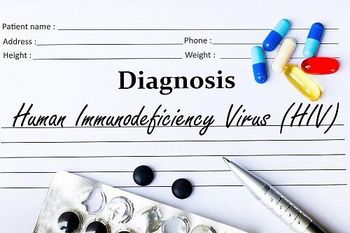In 2021, a comprehensive national serosurvey in Ukraine provided critical insights into the epidemiology of viral hepatitis within the country, revealing a weighted prevalence of 3.3% for hepatitis C virus (HCV) antibodies, 11.6% for hepatitis B core antibodies (anti-HBc), and .9% for hepatitis B surface antigen (HBsAg), an indicator of active hepatitis B virus (HBV) infection. Notably, among individuals testing positive for HBsAg, 7.5% also demonstrated antibodies against hepatitis D virus (HDV), highlighting the presence of this less common but clinically significant coinfection that exacerbates liver disease progression.1
The study results were derived from blood samples collected during a household-based SARS-CoV-2 serosurvey, with testing for hepatitis B, C, and D markers. Post-stratification weighting adjusted for Ukraine’s population distribution by sex, age, and urbanization, with additional regional prevalence estimates generated. Prevalence of hepatitis B and C markers was notably higher among men and residents of southern Ukraine, indicating widespread past or current exposure to these viruses.1
The investigators note, “This nationwide study provides the first representative estimates of viral hepatitis markers across Ukraine, highlighting significant regional and demographic disparities. Our findings underscore the critical need to enhance vaccination programs and implement targeted interventions to mitigate the burden of hepatitis B, C, and D nationwide.”1
Several limitations affect interpretation: the survey was designed for SARS-CoV-2 antibodies and lacked hepatitis risk factor data, limiting risk assessment; sample size assumptions may reduce precision for low-prevalence infections; demographic differences required weighting for representativeness; exclusion of COVID-19-vaccinated individuals could affect generalizability; active HCV infection couldn’t be assessed due to missing RNA/antigen testing; HBsAg testing only in anti-HBc-positive participants may underestimate HBV and HDV prevalence; and regional sample sizes were too small for detailed analysis. Despite these issues, the study offers valuable baseline data to guide Ukraine’s hepatitis control amid ongoing challenges.1
The authors advocate for sustained newborn hepatitis B vaccination, targeted screening, early antiviral treatment, and increased public awareness in alignment with World Health Organization elimination targets.1
What You Need To Know
Hepatitis C antibodies were found in 3.3% of the population, hepatitis B core antibodies in 11.6%, and hepatitis B surface antigen in 0.9%, with 7.5% of HBsAg-positive individuals showing hepatitis D antibodies.
Prevalence was higher among men and in southern regions, indicating widespread exposure and the need for targeted public health strategies.
Despite limitations, the study offers crucial baseline data supporting newborn vaccination, screening, treatment, and awareness efforts aligned with WHO goals.
On a global scale, viral hepatitis remains a health concern. According to the CDC’s July 25, 2025, update, over 300 million people worldwide are affected by viral hepatitis. In 2022, there were an estimated 1.2 million new HBV infections and 1 million new HCV infections. Chronic HBV and HCV infections account for approximately 1.3 million deaths annually from liver disease and hepatocellular carcinoma.2
Despite effective vaccines for hepatitis A and B and curative treatments for hepatitis C, underdiagnosis and undertreatment persist. Global hepatitis B birth dose coverage was only 45% in 2022, with 84% completing the full three-dose series. Treatment coverage remains suboptimal, with many patients lacking access to essential care.2
The CDC emphasizes the urgent need to increase vaccination rates, expand diagnostic and treatment access, and improve public awareness to reduce the global burden of viral hepatitis and accelerate progress toward elimination.2
References
1.Ludmila K, Vladyslav F, Iryna S, et. al. National representative seroprevalence of viral hepatitis B, C, and D seromarkers in Ukraine, 2021. Euro Surveill. 2025;30(29):pii=2500015. Accessed July 28, 2025. https://doi.org/10.2807/1560-7917.ES.2025.30.29.2500015
2.Centers for Disease Control and Prevention. Global Viral Hepatitis. CDC. Published July 25, 2024. Accessed July 28, 2025. https://www.cdc.gov/hepatitis/global/index.html




















































































































































































































































































